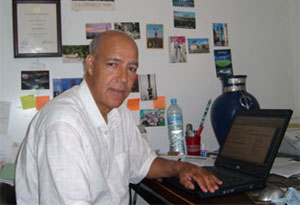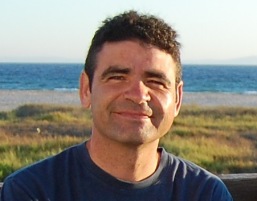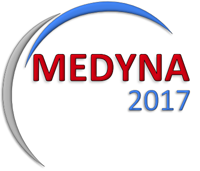Three keynote lectures, and a special forum session will be organized during the conference:
-
Sondipon Adhikari - Swansea University (UK) - Homogenisation and dynamics of randomly irregular metamaterial

Abstract: Metamaterials based on hexagonal periodic cells (honeycombs) have gained considerable attention in recent years. This can be an advanced material due to its capability of meeting high performance requirements in various critically desirable application-specific parameters [1]. These structural assemblies not only make an efficient use of material, but are also characterized by interesting dynamic and wave propagation properties. A semi-analytical formulation has been developed for wave propagation in irregular honeycombs. Spatial structural irregularity of hexagonal lattices has been considered. There are few scientific literatures available concerning analysis of wave propagation in regular honeycombs [2]. However, due to inevitable uncertainties associated with manufacturing and service conditions, honeycomb lattices may not be always perfectly regular. The effect of spatially random structural irregularity in wave velocities of such irregular honeycombs will be discussed. The nature of so called ‘pass band’ and ‘stop bands’ due to irregularities will be explained.
References:
1. Gibson L., Ashby M. F. (1999) Cellular Solids Structure and Properties. Cambridge University Press, Cambridge, UK.
2. Gonella S., Ruzzene M. (2008) Analysis of in-plane wave propagation in hexagonal and re-entrant lattices, Journal of Sound and Vibration 312 125–139
Prof Adhikari is the chair of Aerospace Engineering in the College of Engineering of Swansea University. Currently he is a Wolfson Research Merit Award holder from the Royal Society. He received his PhD in 2001 from the University of Cambridge (in Trinity College). He was an Engineering and Physical Science Research Council (EPSRC) Advanced Research Fellow and winner of the Philip Leverhulme Prize (2007). He was a lecturer at the Bristol University and a Junior Research Fellow in Fitzwilliam College, Cambridge. He was a visiting Professor at the Carleton University, The University of Paris East and a visiting scientist at the Los Alamos National Laboratory. From 2015 he has been a Distinguished Visiting Professor at the University of Johannesburg.
His research areas are multidisciplinary in nature and include uncertainty quantification in dynamic systems, computational nanomechanics (nanotubes, graphene, nano-bio sensors), dynamics of complex systems, inverse problems for linear and non-linear dynamics and vibration energy harvesting. He has obtained more than £1.5M of competitive research funding as principal investigator, published four books, 251 international journal papers and over 150 conference papers in these areas. His works have been widely cited (over 7000 citations and a H-index of 45 in Google scholar) in the scientific community.
Professor Adhikari is in the editorial board of 17 international journals, research grant reviewer of 15 funding councils and served in over 40 Scientific and Technical Committees. He is an associate Fellow of American Institute of Aeronautics and Astronautics (AIAA) and a member of AIAA Non-Deterministic Approaches Technical committee (NDA-TC).
-
Mohamed Belhaq - University Hassan II of Casablanca (MA) - On the stability loss of limit cycle oscillations near strong resonances: synchronization and heteroclinic bifurcation

Abstract: In self-excited nonlinear oscillators subjected to harmonicforcing, frequency-locking can occur near strong resonances. This phenomenon results from synchronization between the frequency of theforcing and the frequency of the limit cycle oscillation leading to frequency-locked motions for which the response of the system follows the forcing frequency.
Inthe case of 1:4 resonance, which is considered as one of the unsolved problem in nonlinear dynamics [1], the limit cycle loses its stability at the synchronization via heteroclinic bifurcation. Usually, the transition between quasi-periodic and synchronized motions occurs via heteroclinic connections at two different frequencies causing hysteresis and bistability. Therefore, analytical approximation of heteroclinic bifurcations near the 1:4 resonance is of great importance since they determine the locations at which the frequency-locked motion takes place.
The existence of heteroclinic orbits in ordinary differential equations corresponds to the existence of coherent structures such as solitons and fronts in certain partial differential equations. For instance, they form the profiles of traveling wave solutions in reaction–diffusion problems and spatially localized post-buckling states in static dynamics. Also, heteroclinic orbits correspond to the onset of various types of synchronization in certain problems in physics and biology [2,3]. Therefore, one of the challenging problems is the analytical capture of the heteroclinic bifurcations location near the strong resonances [1]. To the best of our knowledge, rigorous analytical expressions of heteroclinic bifurcation near these resonances have not been obtained, only numerical methods have been performed [4,5]. In this talk, recent analytical methods to capture approximation of such heteroclinic bifurcations in the problem of stability loss of limit cycle oscillations near the 1:4 resonance will be presented. The problem of 1:3 resonance will be also discussed.
* Joint work with W. Qin, K.W. Chung and A. Fahsi
References:
1. V.I. Arnold, Loss of stability of self-oscillation close to resonance and versal deformations of equivariant vector fields. Funkts. Anal. Priliozh. 303, 2–10 (1977)
2. K. Wiesenfeld, P. Colet, S.H. Strogatz, Frequency locking in Josephson arrays: connection with the Kuramoto model. Phys. Rev. E 57, 15631569 (1998)
3. P. Ashwin, O. Burylko, Y. Maistrenko, Bifurcation to heteroclinic cycles and sensitivity in three and four coupled phase oscillators. Phys. D 237, 454–466 (2008)
4. F.S. Berezovskaia, A.I. Khibnik, On the bifurcation of separatrices in the problem of stability loss of auto-oscillations near 1:4 resonance. J. Appl. Math. Mech. 44, 938–943 (1980)
5. B. Krauskopf, On the 1:4 resonance problem. Ph.D. Thesis, University of Groningen (1995)
Mohamed Belhaq is Professor of Mechanics at University Hassan II-Casablanca. He received his Ph.D. at the University Paul Sabatier, France. He has been a visiting professor and lecturer at FU Berlin, University of Sevilla, University of L'Aquila, EC Lyon, INSA Lyon, UC Madrid, Military University of Warsaw, University of Munich, Cornell University, Virginia Tech University, Perdue University, Indiana State University and University of Jordan. Belhaq received two Fulbright Scholarships for conducting research at Cornell University and at Virginia Tech University and has been DAAD scholar at FU Berlin. He is in the editorial board of several international journals and serves as an Associate Editor to the Journal of Vibration and Control.
Belhaq is a member of the International Research Center for Mathematics & Mechanics of Complex Systems (M&MoCS). He edited two books, published 124 papers in leading journals of mechanics and nonlinear dynamics, and he contributed in many international conferences.
-
José Luis Escalona - University of Sevilla (SP) - Multibody modeling and simulation of the dynamics of railroad vehicles and tracks

Abstract: Computational analysis of the dynamics of railroad vehicles is becoming an essential tool for this industry. Vehicle designers, rolling stock manufactures and railroad administrations benefit from the special modeling tools provided by the different railroad multibody softwares that are present in the market. Railroad dynamics is nowadays a sub-field of multibody dynamics that is characterized by the use of special algorithms for the treatment of the track geometry and the wheel-rail interaction. This presentation shows the theoretical foundations of these algorithms. Railroad vehicles have been traditionally designed using linearized equations that uncouple the longitudinal, lateral and vertical dynamics. Linear models can be used to find a first approximation of the response of the vehicle to the track geometric irregularities, the lateral stability or the curving behavior. Linear models are based on the kinematics of the conical wheels, linear creep wheel-rail forces and the vehicle is considered as a collection of rigid bodies connected by springs and dashpots. On the other hand, multibody models of the railroad vehicles and track take into account the complex wheel-rail contact geometry and their normal and tangential interaction forces. The railroad vehicle bodies are assumed to be connected by kinematic joints and the can be considered as deformable. These modeling capabilities provide a more detailed insight into the vehicle dynamics at the expense of much longer computational analysis. However, special techniques like the use of trajectory coordinates or contact lookup tables alleviate this problem without significant reduction in accuracy. This presentation shows the modelling keys for the real-time simulation of railway vehicles using multibody dynamics that can be used in on–board applications.
José L. Escalona is professor of Mechanical Engineering at the University of Seville, Spain. His research fields are Flexible Multibody Dynamics and Railway Dynamics. He received his degree in Mechanical Engineering and Ph.D. at the University of Seville. He has been Fulbright scholar at the University of Illinois at Chicago, research scholar at the University of Stuttgart and visiting professor at Lappeenranta University of Technology. He is associate editor of the ASME Journal of Computational and Nonlinear Dynamics, member of the scientific board of the International Journal of Railway Technology, Secretary of the IFToMM Committee for Multibody Dynamics and member of the ASME Committee for Multibody and Nonlinear Dynamics. Escalona has published 36 journal papers and over 60 conference papers. Escalona is also founder of the spin-off company “virtualmech”.
Special forum session "In honour of Prof. Mohamed Ali Hamdi" (UTC / FR) organized by Noureddine Attala (GAUS / CA)

This forum session will be the opportunity for the conference attendes to acknowledge Professor Hamdi's contributions in the field of vibroacoustics. Some researchers who have close association with Prof. Hamdi, past and present collaborators, will participate to this forum, including:
- Noureddine Atalla (GAUS / CA) - Introduction
- Claude Lesueur (video only) (ISAT / FR)
- Mohamed Ali Hamdi (UTC / FR) - Symmetric variational coupling of Boundary and Finite Element Methods for solving Vibro-Acoustic problems
- Jean-Michel Ville (UTC / FR) - Aero-acoustic experimental identification of feedback mechanisms in a car HVAC
- Christian Glandier (Daimler-Benz AG / DE) - Engine sources identification using an inverse BEM technique
- Marc Anciant (ESI Group / FR) - The development of RAYON-PEM solver - Academic & Industrial Milestones
- Thibaut Gras (UTC / FR) Wave Finite Elements - Finite Elements Coupling to compute the dynamic response of an heterogeneous railway track
- Gérard Borello (InterAC / FR) - Prediction of acoustic and shock responses of spacecrafts over broadband frequency range
- Bernard Troclet (Airbus Safran Launchers / FR) - Lessons Learned from ARIANE4 and ARIANE 5 Vibroacoustics Analysis
- Bryce Gardner (ESI Group / FR) - Diffuse field loading of space structures - modeling and test
Mohamed-Ali Hamdi is Professor at the University of Technology of Compiegne (UTC, France) since 1978. Doctor Es-sciences (1982), Doctor Engineer (1978) and Mechanical Engineer of “Ecole Nationale Supérieure des Arts et Métiers (Angers 71-74, Paris 1975)”.
Known as worldwide expert in computational vibro-acoustics. He developed numerical methods based on Boundary and Finite Element Methods (BEM-FEM) for solving noise & vibration problems encountered in aerospace, aeronautic and ground transportation industries. He supervise 27 PhD’s and published over 100 scientific papers.
He founded in 1986 STRACO (STRuctural ACOustics), a Technology Transfer company spin-off of his research team at UTC, specialized in development of Vibro-Acoustic (VA) Computer Aided Engineering (CAE) Software tools (RAYON® BEM-FEM Solvers) dedicated to modeling and solving of Noise, Vibration and Harshness (NVH) problems. STRACO has been acquired early 2001 by ESI Group, a top 5 worldwide software editor leader, specialized in virtual prototyping and virtual manufacturing. Since 2001 Professor Hamdi is acting as Scientific Director of the Vibro-Acostic Software Branch of ESI Group.
He has been awarded by the “National Order of Merit” in Education and Sciences in 1996 and by the Award Technology Transfer University-Industry of the French Acoustic Societyin 2008.




